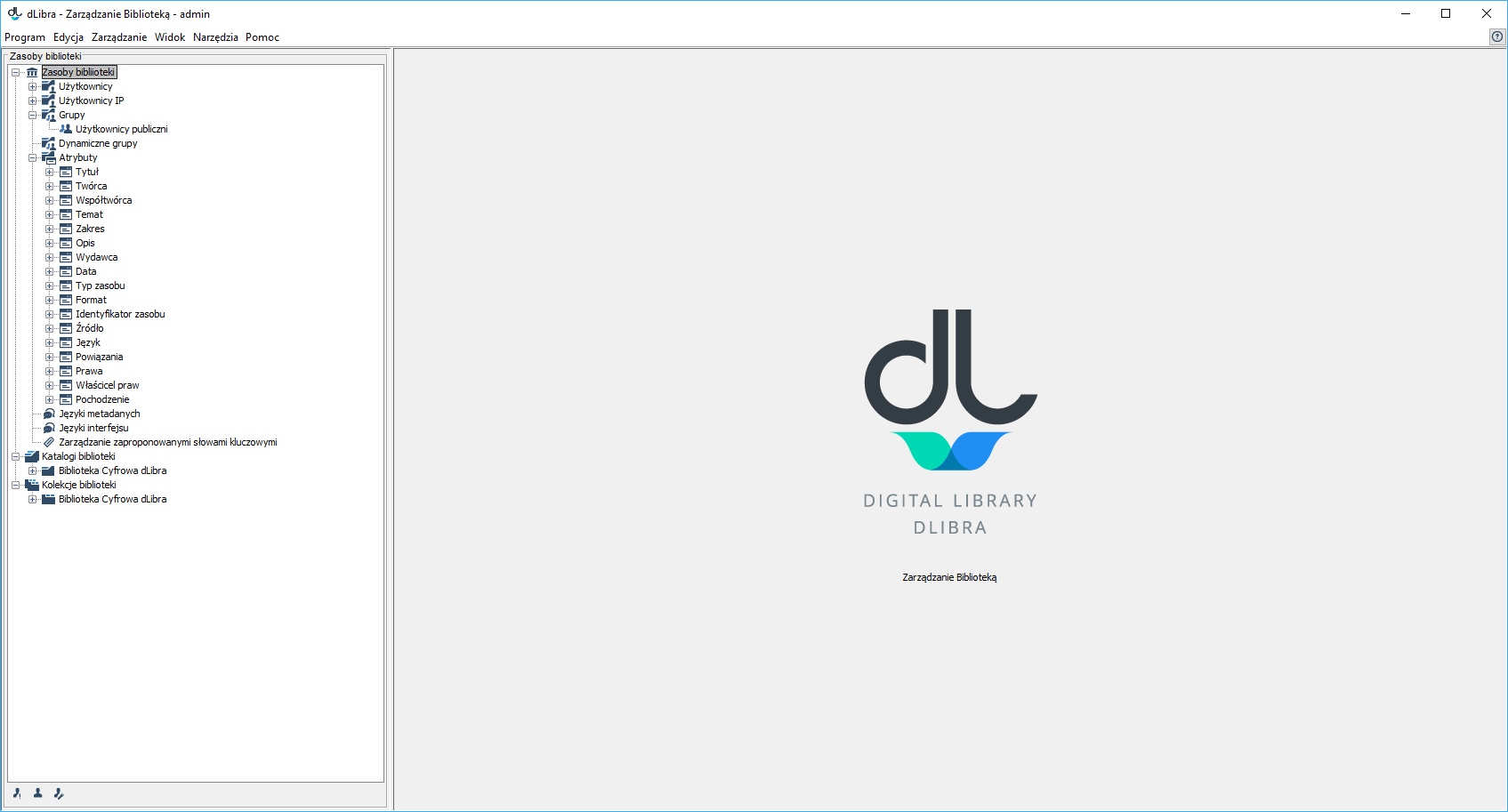General information
The main window of the Administrator Application consists of two parts. The library tree on the left gives access to such resources as library users, groups, attributes schemas, and the directory of the cotnents of the library. The property windows on the right describe the element which is currently selected in the library tree.
The Library Tree
The library tree consists of library resources, directories, and collections, represented as separate subtrees.
The subtree of library resources consists of nodes of the following types:
- users’ node – contains nodes which represent library users;
- user node – represents a single library user;
- groups’ node – contains nodes which represent user groups;
- group node – represents a single group of library users;
- dynamic groups’ node – contains nodes which represent dynamic groups; only visible when the dLibra system is configured for using dynamic groups;
- dynamic group node – represents a single dynamic group;
- attributes’ node – contains nodes which represent the attributes defined in the library;
- attribute node – represents a single attribute defined in the library;
- language management – makes it possible to manage a particular type of languages; and
- tag management – makes it possible to manage tags entered by web page users.
Apart from the nodes which represent resources, the library tree contains a node which gives access to the library content. The structure of that node is described in the Main Window of the Editor Application section. The difference lies in the fact that all objects are available directly in the tree and not on a separate list. Besides, when the administrator has clicked an element, he or she can only manage the access permissions for that element. Neither the content of the object not other options are visible
Drzewo Kolekcji umieszczone jest pod węzłem Kolekcje biblioteki. Składa się ono z węzłów tylko jednego typu - węzłów kolekcji, reprezentujących kolekcje biblioteki. Kolekcje są zgrupowane w strukturze hierarchicznej. Każda kolekcja może zawierać dowolną liczbę kolekcji podrzędnych. Na każdym poziomie tej struktury kolekcjom można przypisywać obiekty. Do każdej kolekcji może należeć dowolna liczba obiektów. Przynależność obiektu do danej kolekcji implikuje także jej przynależność do wszystkich kolekcji nadrzędnych aż do kolekcji głównej biblioteki włącznie. Z węzłem każdej kolekcji związane jest menu kontekstowe, które umożliwia szybki dostęp do trzech operacji: dodania, usunięcia oraz odświeżenia kolekcji. Menu to wywoływane jest po kliknięciu na węźle kolekcji prawym przyciskiem myszy. Wybierając kolekcję, na panelu właściwości możemy zmieniać właściwości tej kolekcji, przypisywać obiekty oraz modyfikować prawa użytkowników do niej.
Z każdym węzłem na drzewie biblioteki związane jest menu kontekstowe, które zapewnia szybki dostęp do operacji najczęściej wykonywanych na danym elemencie (np. tworzenie nowego katalogu).
Podobnie jak w przypadku Drzewa Katalogów (zobacz aplikacja redaktora) w dolnej części Drzewa Biblioteki znajduje się przycisk służący do ukrywania węzłów. Obecnie możliwe jest ukrywanie węzłów użytkowników.









